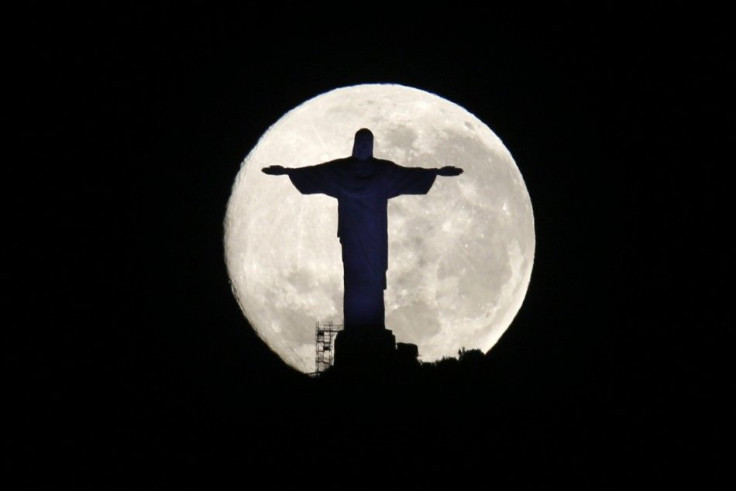Celestial Events September 2014: Supermoon, New Moon, Equinox Plus Brightest Planets To Watch Out For

The night sky of September 2014 is going provide spectacular views for skygazers. There are some celestial events to witness during the month. Here is a guide to the sky events occurring in the September sky including Supermoon, New Moon, Equinox and more.
Full Moon: According to Sea and Sky's Astronomy Calendar of Celestial Events for Calendar Year 2014, the full moon will occur on Monday, Sept. 9, 2014. The moon will be positioned directly opposite the Earth and the sun at 01:38 UTC. It is also called the Harvest Moon because it takes place "closest to the September equinox each year." Also, American tribes called it the Full Corn Moon because fields of corn were harvested at this time of the year. Natural World News notes September's full moon is the third supermoon of the year 2014. This supermoon is also known as "perigee moon." The website notes that on this day the moon will "appear 16 percent bigger and 30 percent brighter than other full moons."
Equinox: Sept. 23 will witness the autumn equinox of the year 2014. According to Seasky.org, the event occurs at 02:29 UTC. On this day, day and night are almost of equal length. The sun crosses the Earth's equator while moving southwards. In the Northern Hemisphere, it marks the beginning of fall and is called autumnal equinox. As for the Southern Hemisphere, it is the beginning of spring and is called as vernal equinox.
New Moon: A day after the September Equinox, the New Moon will occur. On Sept. 24, 2014, the moon remains invisible in the sky. It will be positioned directly between the Earth and the sun at 06:14 UTC.
Those who want to observe the brightest planets in the September Sky can expect to see at least five planets. According to EarthSky.org, Mars, Saturn, Mercury, Venus and Jupiter remain visible in the night sky this month. The website notes one can find Saturn and Mars to position close to each other in the "southwest sky." The planets will be easily visible on Sept. 27, 28 and 29, a few days after the occurrence of new moon. Mercury will reportedly remain visible in the evenings until mid-October. As for Venus and Jupiter, the website notes that during the early days of September, Jupiter can be seen two and a half hours before sunrise and Venus can be viewed an hour before dawn. Towards the end of September, Jupiter can be viewed four and a half hours before sunrise and Venus can be seen one-half hour before daybreak.




















